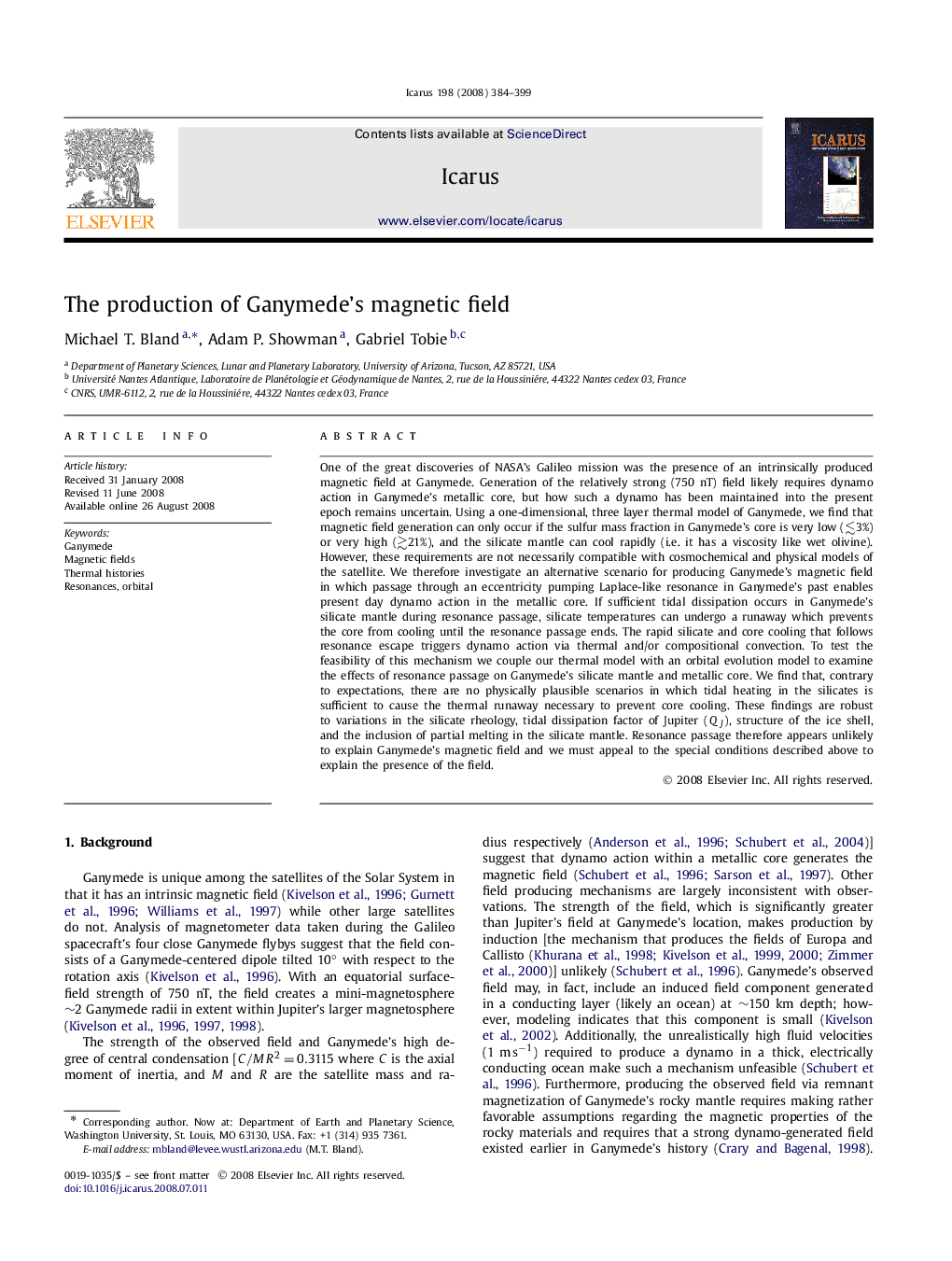| Article ID | Journal | Published Year | Pages | File Type |
|---|---|---|---|---|
| 1775636 | Icarus | 2008 | 16 Pages |
One of the great discoveries of NASA's Galileo mission was the presence of an intrinsically produced magnetic field at Ganymede. Generation of the relatively strong (750 nT) field likely requires dynamo action in Ganymede's metallic core, but how such a dynamo has been maintained into the present epoch remains uncertain. Using a one-dimensional, three layer thermal model of Ganymede, we find that magnetic field generation can only occur if the sulfur mass fraction in Ganymede's core is very low (≲3%) or very high (≳21%), and the silicate mantle can cool rapidly (i.e. it has a viscosity like wet olivine). However, these requirements are not necessarily compatible with cosmochemical and physical models of the satellite. We therefore investigate an alternative scenario for producing Ganymede's magnetic field in which passage through an eccentricity pumping Laplace-like resonance in Ganymede's past enables present day dynamo action in the metallic core. If sufficient tidal dissipation occurs in Ganymede's silicate mantle during resonance passage, silicate temperatures can undergo a runaway which prevents the core from cooling until the resonance passage ends. The rapid silicate and core cooling that follows resonance escape triggers dynamo action via thermal and/or compositional convection. To test the feasibility of this mechanism we couple our thermal model with an orbital evolution model to examine the effects of resonance passage on Ganymede's silicate mantle and metallic core. We find that, contrary to expectations, there are no physically plausible scenarios in which tidal heating in the silicates is sufficient to cause the thermal runaway necessary to prevent core cooling. These findings are robust to variations in the silicate rheology, tidal dissipation factor of Jupiter (QJQJ), structure of the ice shell, and the inclusion of partial melting in the silicate mantle. Resonance passage therefore appears unlikely to explain Ganymede's magnetic field and we must appeal to the special conditions described above to explain the presence of the field.
